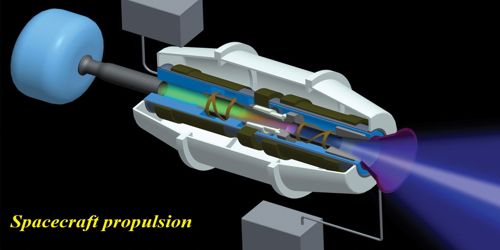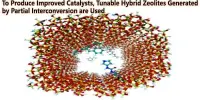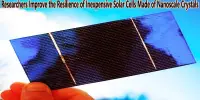Spacecraft propulsion is used to change the velocity of spacecraft and artificial satellites. It is used to change the velocity of spacecraft and artificial satellites, or in short, to provide delta-v. It is any method used to accelerate spacecraft and artificial satellites. Modern literature of space technology often distinguishes the spacecraft propulsion according to the region of space foreseen for their movement, and more frequently, we find the following terms that represent these space regions, such as “In-Space”, “Deep Space” and “Outer Space”.
Space propulsion exclusively deals with propulsion systems used in the vacuum of space and should not be confused with launch vehicles. It is any method used to accelerate spacecraft and artificial satellites.
Space propulsion or in-space propulsion exclusively deals with propulsion systems used in the vacuum of space and should not be confused with launch vehicles. The propulsion system of a rocket includes all the parts that make up the rocket engine: tanks, pumps, propellants, powerhead, and rocket nozzles. Several methods, both pragmatic and hypothetical, have been developed each having its own drawbacks and advantages. The function of the propulsion system is to produce thrust, which is the force that moves a rocket through air and space.

There are many different methods. Each method has drawbacks and advantages, and spacecraft propulsion is an active area of research. Most spacecraft today are propelled by heating the reaction mass and allowing it to flow out the back of the vehicle. This sort of engine is called a rocket engine. All current spacecraft use chemical rockets (bipropellant or solid-fuel) for launch.
Artificial satellites must be launched into orbit, and once there they must be placed in their nominal orbit. Most satellites have simple reliable chemical thrusters or resist jet rockets for orbital station-keeping and some use momentum wheels for attitude control. Soviet bloc satellites have used electric propulsion for decades, and newer Western geo-orbiting spacecraft are starting to use them for north-south station-keeping and orbit raising. Spacecraft designed to travel further also need propulsion methods. They need to be launched out of the Earth’s atmosphere just as satellites do. Once there, they need to leave orbit and move around.
Different propulsion systems generate thrust in different ways, but always through some application of Newton’s third law of motion. Interplanetary vehicles mostly use chemical rockets as well, although a few have used ion thrusters and Hall-effect thrusters (two different types of electric propulsion) to great success. In any propulsion system, a working fluid is accelerated and the reaction to this acceleration produces a force on the system.
















